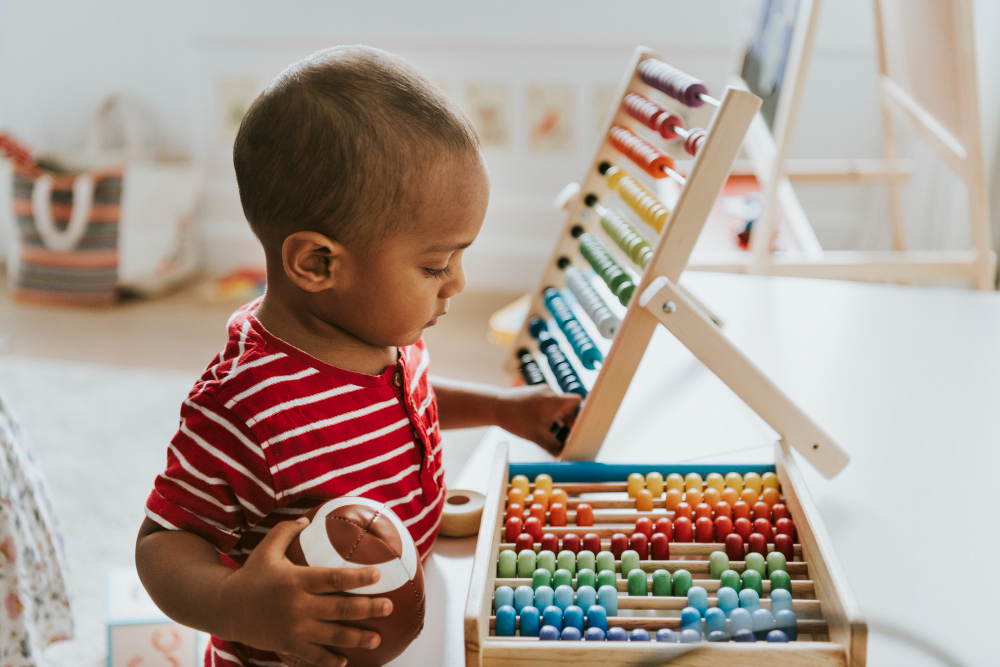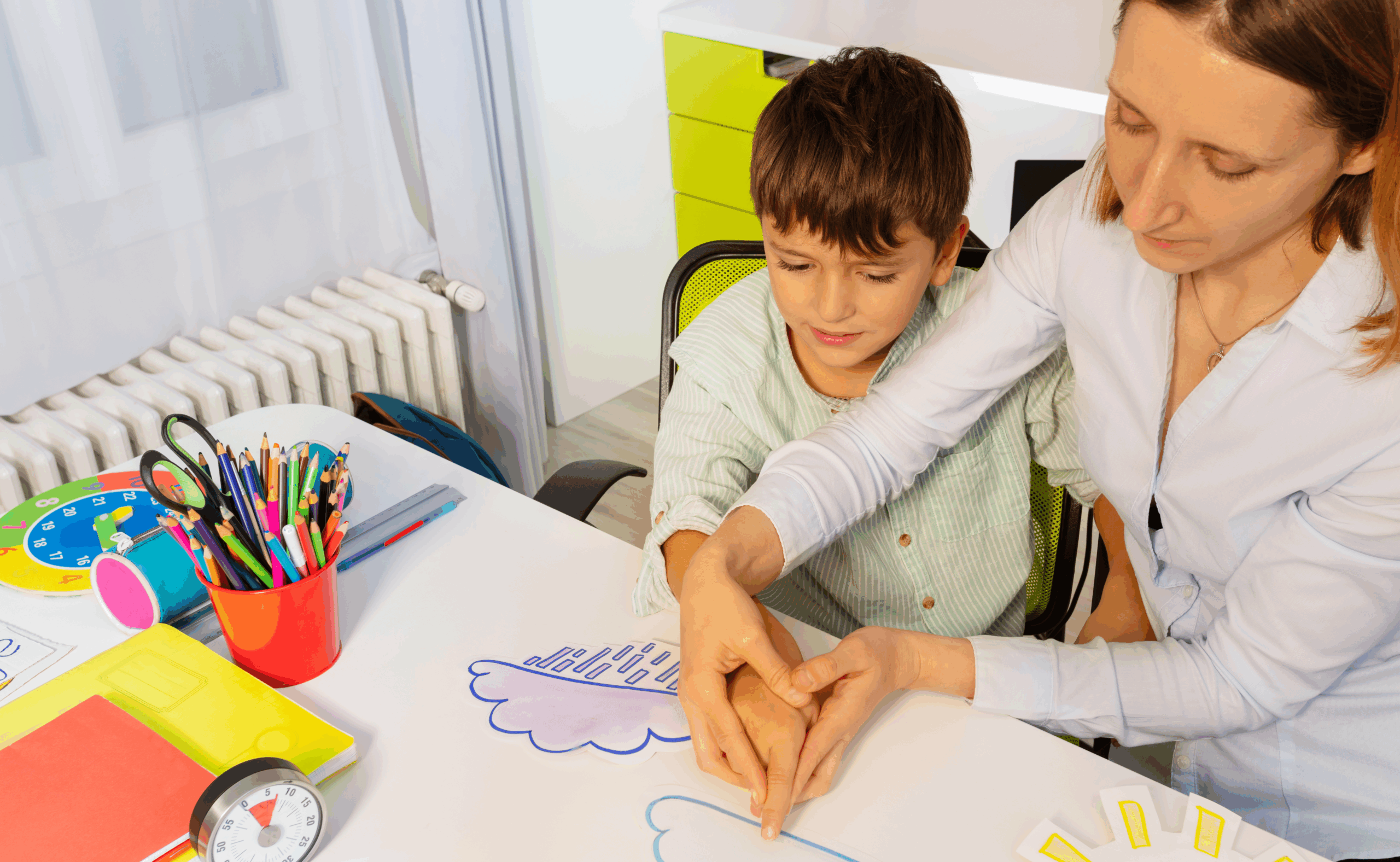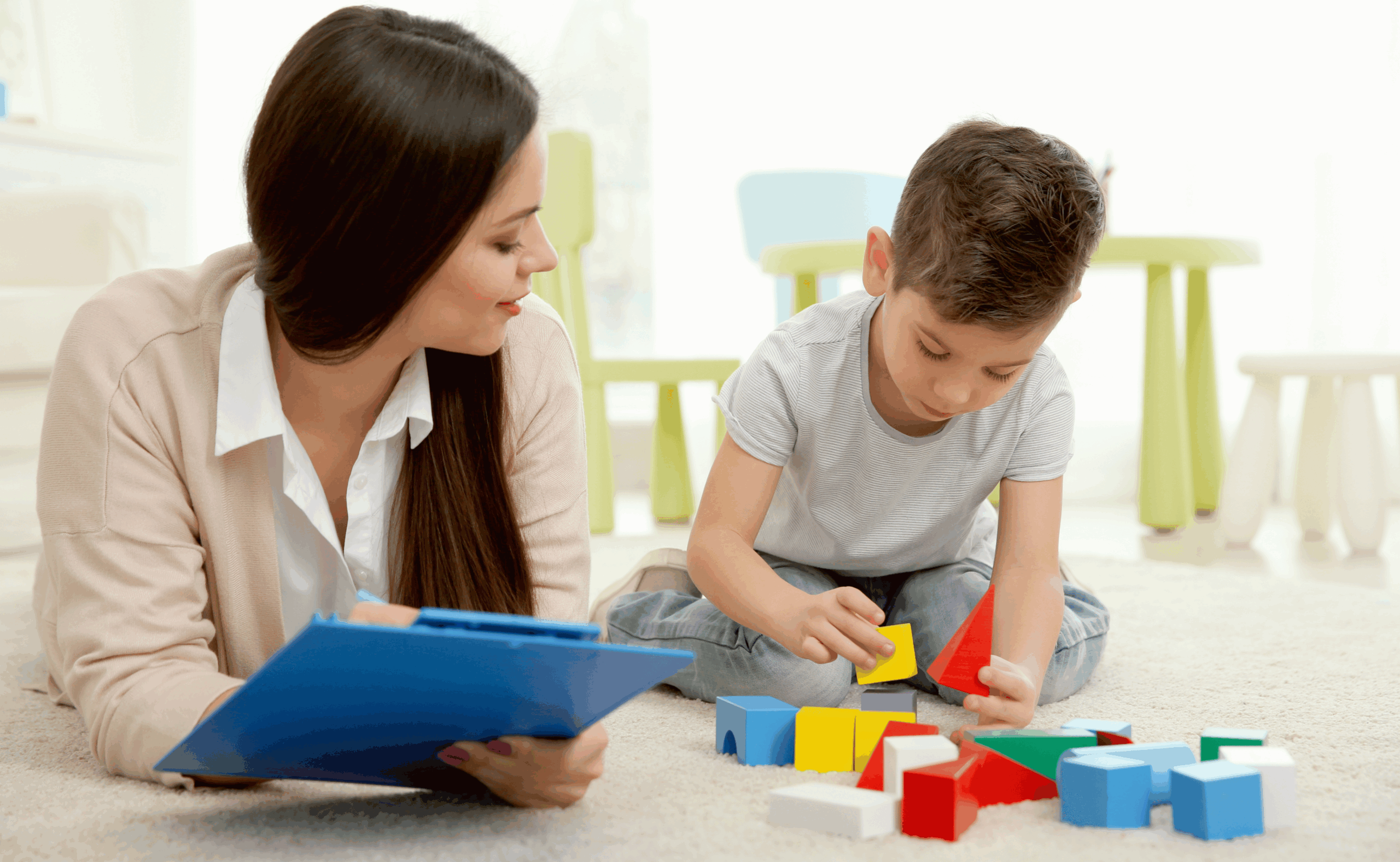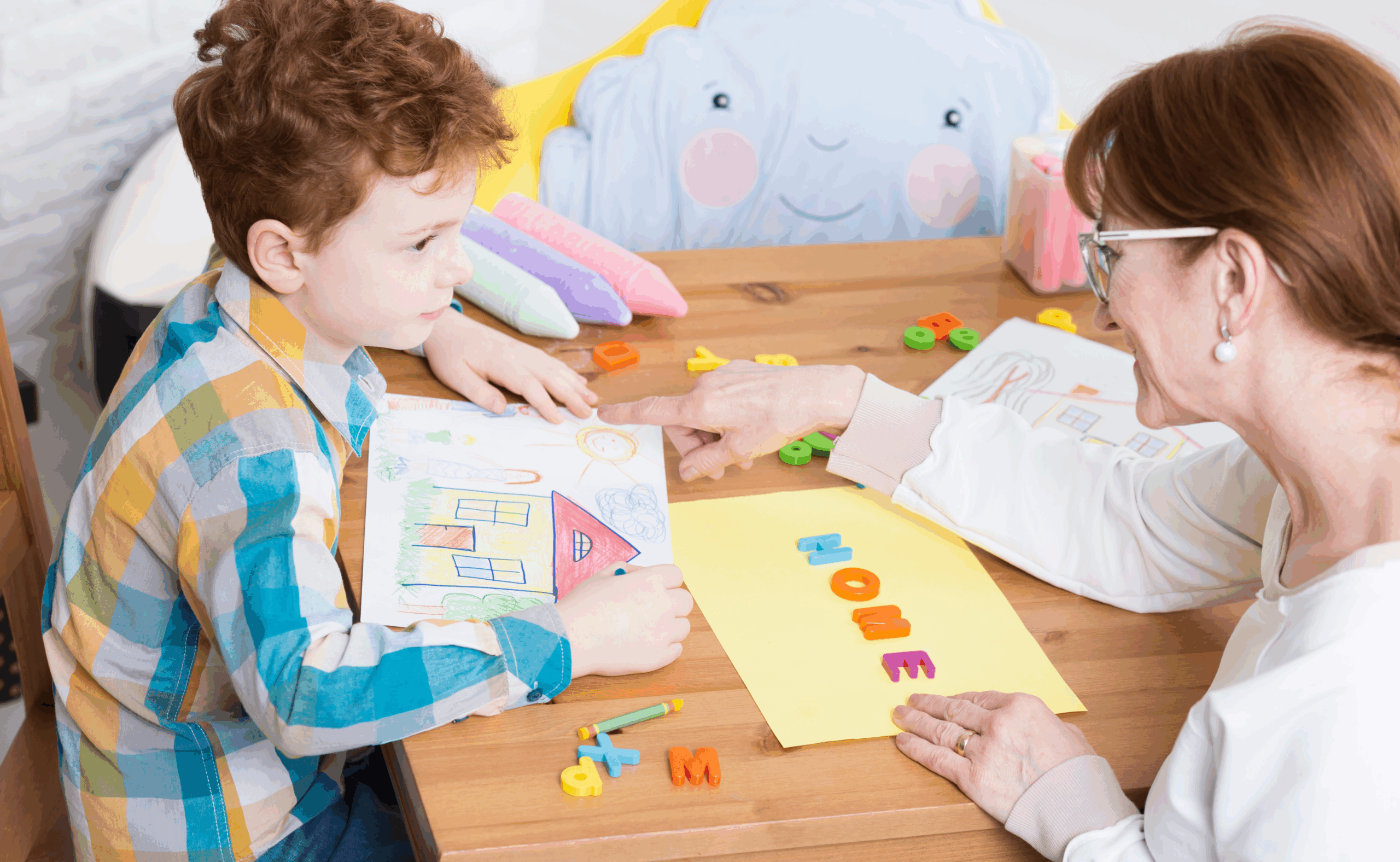How in the world do daycares get babies to sleep? If you’re a parent of an infant, you’ve probably asked this question yourself. While babies need a lot of sleep – usually between 14 and 17 hours a day – it can be pretty hard to convince them to do it.
A lot of parents end up having to leave their babies at a daycare once they return to work. This can be a hard decision, but looking for child care is often necessary.
What surprises so many moms and dads, though, is how quickly and easily their babies nap at daycare.
Is it magic? Not quite. Here’s a look at some of the things that daycares do to get babies to sleep well and how you can apply these tactics at home.
Key Takeaways:
- Following a regular sleep routine can help infants develop good sleep habits.
- Creating a sleep-friendly environment can help babies fall asleep faster.
- Recognizing infant sleep cues can help parents put them down at the right time.
The Daycare Approach to Baby Sleep
Baby naps are a big deal in daycare. It’s a time when the babies can rest and recharge after a morning of playing and learning.
But how do they actually get the babies to sleep? There are a few things that daycares do:
Naptime is a part of the daily daycare routine.
From the moment the baby walks in the door, they are following a set routine. This might include breakfast, free play, circle time, lunch, storytime, more free play, and then naptime.
This predictability is comforting for many babies and helps them know what to expect next. This also conditions their bodies to start feeling sleepy at a certain time each day.
They create a sleep-friendly environment.
To help babies sleep, daycares create a calm and relaxed environment in the infant room. The lights are dimmed, the noise level is kept low, and soft music might be playing in the background. Together, this creates a restful atmosphere that encourages sleep.
They use white noise machines.
Contrary to popular belief, complete silence is not always the best way to get babies to sleep. In fact, some babies find it easier to drift off when there is a low, consistent noise in the background.
This is why you’ll often see white noise machines in daycare classrooms. These can help babies feel more comfortable and nap more easily.
Daycare teachers use swaddling and rocking techniques.
Daycare teachers don’t just plop babies down and hope for the best. They often use tried-and-true methods to help soothe infants and encourage them to drift off.
For instance, a childcare provider may gently stroke a baby’s cheek or forehead. They may also wrap the baby snugly in a blanket, which can help them feel secure and relaxed. Some babies also love being rocked, so this may be part of the nap time routine as well.
The best daycares take time to get to know each baby.
Each baby is unique, and so are their sleep habits. Some babies nap easily, while others need a little more help. Some may not even like nap time at all or suffer from separation anxiety.
The best daycares and childcare providers try to get to know all the children so they can understand their individual needs. For instance, they may invite the parent to fill out a sleep questionnaire or join in on a few naptime sessions to see how their baby sleeps best.
This information is then used to create a personalized daycare sleep plan for each baby.
They observe babies for cues that they’re sleepy.
Babies can’t always communicate when they’re ready for a nap, but there are some telltale signs that a daycare caregiver knows how to look for. For instance, they may notice that a baby is rubbing their eyes or yawning a lot.
Other cues that a baby is ready for sleep include being cranky or fussy, losing interest in toys, or becoming very quiet.
Once they notice these cues, they’ll start to get the baby ready for naptime. It’s important not to wait too long, though, as babies who are overtired will have a harder time falling asleep.
Daycares schedule naptime after feeding.
Ever noticed that you tend to feel sleepy after eating a big meal? The same is true for babies. When they’re full and content, their bodies are more likely to relax and drift off to sleep.
That’s why most daycares schedule naptime after mealtimes. The babies are usually halfway to a nap already, and this makes it much easier for them to fall asleep when they’re put down for a nap.
In short, there’s no magic formula for a child’s sleep. The key is to really pay attention to each baby’s sleep needs: the cues they give, the environment they sleep best in, and the things that help them relax.
How Do Daycares Get Toddlers to Sleep?
Just like with infants, daycares use a variety of techniques to get toddlers to sleep. But since toddlers are older and more active, there are a few additional things they do to encourage sleep.
They use calming activities before naptime.
To help toddlers wind down, daycares often do some calming activities before naptime. This includes non-stimulating activities like reading stories, singing songs, or listening to soft music. This helps reduce a toddler’s energy level and makes it easier for them to fall asleep.
Daycares involve the toddlers in naptime routines.
Toddlers are often more cooperative when they feel like they’re in control. That’s why daycares involve them in the naptime routine as much as possible.
For instance, they may ask the child to help carry their blanket to the nap area in the toddler room. They may also let the toddler choose their own stuffed animal or lovey to sleep with.
And once it’s time to actually lay down and sleep, the toddler is usually given a choice of two or three different sleeping positions. This way, they can pick the one that’s most comfortable for them.
They use positive reinforcement.
Toddlers are also more likely to cooperate when they’re given positive reinforcement. So daycares will often praise a toddler for taking a nap or staying in their bed.
They may also give them a small reward, like a sticker or a piece of candy, after a successful nap. This helps the toddler understand that napping is a good thing and something to be proud of.
What about older kids?
Older kids, like preschoolers and kindergartners, are a little bit trickier when it comes to convincing them to nap. They need less sleep overall, so naps are often shorter and less frequent.
And since they’re more independent, they may not want to listen to the daycare’s rules about napping. It’s common to have them sneak out of the nap area, refuse to lie down or try to play instead of sleep.
Still, daycares still have a few tricks up their sleeve:
They may use a visual schedule.
Visual schedules are especially helpful for kids who have a hard time staying in bed. The schedule will list all the activities that will happen during naptime, like lying down, closing their eyes, and being quiet.
This way, the child knows what to expect and can see that there’s an end in sight. The schedule may also include a small reward for staying in bed the whole time.
They use a soft voice and slow movements.
When it’s time for naptime, the daycare staff will often use a soft voice and slow movements. This helps the kids feel calmer and more relaxed, which makes it easier for them to fall asleep.
They include tiring activities in the day.
To make sure the kids are actually tired by naptime, daycares will often include some tiring activities in the day. This could be anything from outdoor play to arts and crafts, as long as it’s something that wears them out a bit both physically and mentally.
And as always, nap time is scheduled after lunch so the kids are already drowsy from their meal.
They don’t force kids who have trouble sleeping.
Punishing a child for not sleeping during nap time will only make them associate naps with negative feelings. This can eventually lead to them refusing to take naps altogether.
Instead, daycares try to keep nap time a positive experience. No force, no punishments, just a calm and relaxing time for the kids to rest their bodies and minds.
And if a child doesn’t want to sleep? That’s okay, too. As long as they’re quiet and not disrupting the other children, they’re allowed to stay awake and play quietly.
How to Get Babies to Sleep Better at Home
If you’re struggling to get your child to sleep during the day, take a page out of the daycare’s book. Try these tips to make it easier for your baby to drift off to dreamland:
Don’t let them decide when to sleep.
Many parents assume that their babies will just naturally take a nap when they need or want to. This can actually make it harder for most babies to develop healthy sleep habits and become sleep trained.
Instead, set and stick to the same routine as much as you can. Put your baby down for a nap at the same time every day, even if they don’t seem tired. Do the same for night sleep. Children actually thrive when they have a schedule to follow, and this includes sleep patterns.
Make sure their environment is conducive to falling asleep.
Your baby’s sleep space should be dark, quiet, and comfortable. Invest in some blackout curtains or shades to help make it darker, and use a white noise machine to muffle any outside noises. You might also want to consider using a sound machine specifically designed for babies.
Don’t stay in the room with them.
It can be tempting to stay in the room with your baby, but this can actually make it harder for them to sleep. Babies are highly social creatures, so their natural instinct is to stay awake when someone else is around.
If you must stay in the room, sit in a chair by the door and keep your eyes closed. This will help send the message that you’re not available to play or interact.
Be alert to your baby’s sleep cues.
Babies give off lots of subtle cues when they’re getting sleepy, but sometimes parents miss them. For instance, they may start rubbing their eyes because they’re tired, or they may get fussy and cranky.
They may also start sucking on their fingers or yawning a lot. Other babies tend to cry when they’re tired, but this isn’t always the case.
If you see any of these signs, there’s a good chance your baby is ready for a nap. Put them down in their crib or bed and see if they fall asleep on their own.
Don’t let them get overtired.
A tired baby is a sleepy baby, but an overtired baby is a different story. When babies get overtired, they actually have a harder time falling asleep which leads to sleep deprivation.
This is because their bodies are releasing adrenaline, which makes them feel more awake. That’s why it’s so important to recognize a baby’s body language and put them down for a nap before they get too tired.
If you wait too long, they may end up fighting sleep, which will only make things worse.
Coordinate with your daycare.
If your child is attending daycare, it’s important to keep things consistent between home and daycare. This means following the same nap schedule and using similar sleeping arrangements. This can also include being mindful of your schedule at home, such as having an early bedtime or perhaps limiting it to two naps throughout the day.
This will help your child transition between environments and make it easier for them to nap both at home and at daycare.
A good daycare provider will actually welcome this coordination and be happy to work with you to ensure that your child is getting the best possible sleep.
Wrapping It Up
Daytime sleep for infants doesn’t have to be such a struggle. Daycares actually use very simple methods to get infants to sleep during the day, which parents can easily replicate at home.
By following a routine, making the environment conducive to sleep, and being alert to your baby’s cues, you can help your child develop healthy sleep habits that will last a lifetime.







